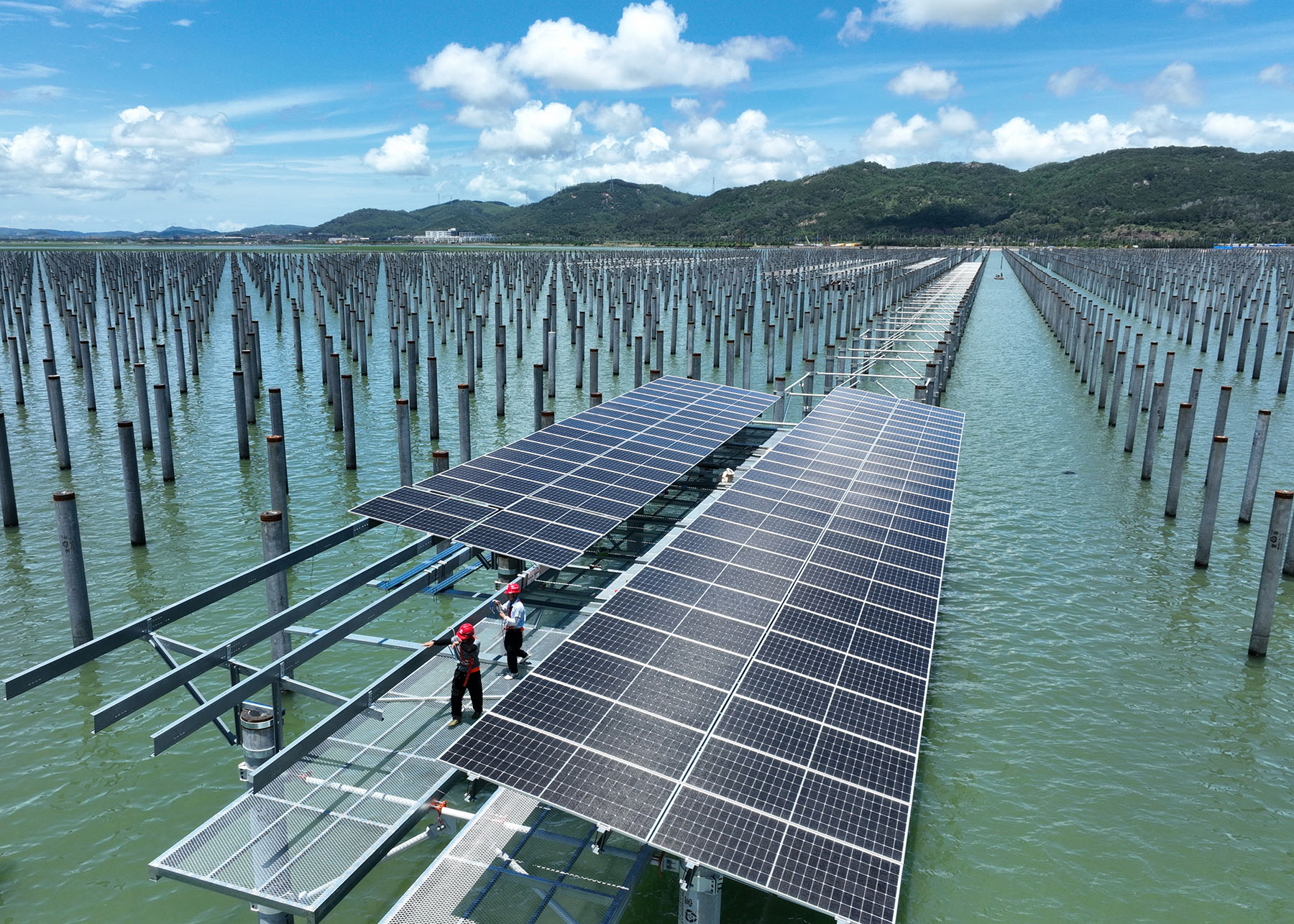Chinese efforts to combat climate change aid global shift to green energy

The rapid growth of renewable energy in China is outpacing the pursuit of national carbon goals, significantly aiding the global shift toward green energy, experts said.
They noted that China's advancements in technology, manufacturing and installations are crucial in providing affordable power and combating climate change globally.
READ MORE: Market-based drivers key to energy success
Heymi Bahar, senior analyst at the International Energy Agency, said China is contributing a major portion of the National Determined Contributions (NDCs) under the Paris Agreement, which is all about countries' climate action goals to cut emissions and adapt to climate impacts.
Bahar said the rapid growth of renewable energy in China can potentially allow the country to peak carbon emissions well ahead of its 2030 goal.
"China's lead in clean energy technologies is much more important than its share in the demand for renewables. Without China's scale of manufacturing and installing renewables, it is very difficult to combat climate change," he said.
"Between 2022 and 2023, clean energy technology investment has increased by almost 50 percent and China was responsible for much of it. The country now dominates the global market of energy technologies. It produces 95 percent of the solar modules in the world. And around 75 percent of the global battery manufacturing is taking place in China."
Zhu Xian, executive vice-president of the International Finance Forum and former vice-president of the World Bank, said being innovation-driven is key to China's energy development. Innovations include the generation 3 nuclear reactors, the continuously upgraded conversion efficiency of photovoltaic cells, ultra-high-voltage transmission technology, new types of energy storage, hydrogen energy, electric vehicles and lithium batteries.
By the end of June, China's grid-connected wind power capacity stood at 470 million kW, and grid-connected solar power capacity was at 710 million kW, totaling 1.18 billion kW and surpassing coal-fired power (1.17 billion kW) for the first time in terms of installed capacity, said the National Energy Administration.
Looking ahead, experts said that market-oriented reforms are set to define major directions of the Chinese energy sector's development in the coming years, highlighting the major discussion points of the recently concluded third plenary session of the 20th Central Committee of the Communist Party of China.
Efforts will be made to advance independent operations of the grids, though they are facing pressure from integrating new energy into the grid, necessitating increased investment, digitization and flexibility. More measures are also in the pipeline to boost renewable energy consumption and improve energy pricing mechanisms, said Lin Boqiang, head of the China Institute for Studies in Energy Policy at Xiamen University.
Wang Bohua, honorary chairman of the China Photovoltaic Industry Association, said at a recent forum that China's new energy sector is witnessing increasing trade barriers.
ALSO READ: China sets example for green transition
"In the first six months, major global photovoltaic markets such as the United States, Europe, India and Brazil rolled out policies that increased barriers to PV product imports and launched measures to protect local productions, posing challenges to global cooperation," he said.
Edmond Alphandery, chairman of the Task Force on Carbon Pricing in Europe, called for further efforts to promote deeper cooperation between China, the US and the European Union, saying without major markets' close cooperation, the international community cannot battle climate change.
He said the global average temperature for the last 12 months has risen by 1.63 C above the pre-industrial average, and the temperature goal of 1.5 C set at the Paris Agreement a decade ago was hanging by a slender thread.
"The consensus reached at the 2023 COP28 United Nations Climate Change Conference in Dubai called for tripling global renewable energy capacity by 2030. To reach the goal, the pace needs to change drastically," said Bahar.


